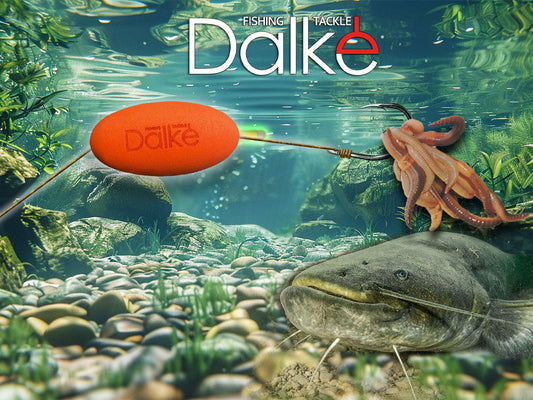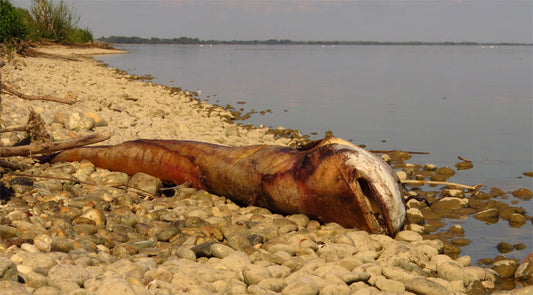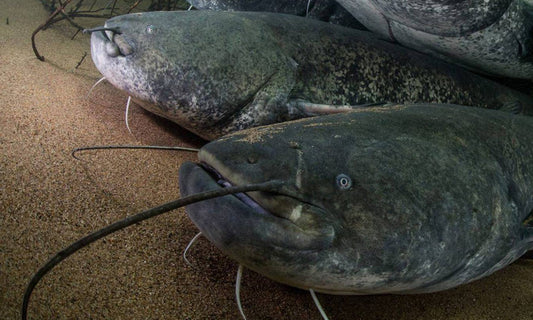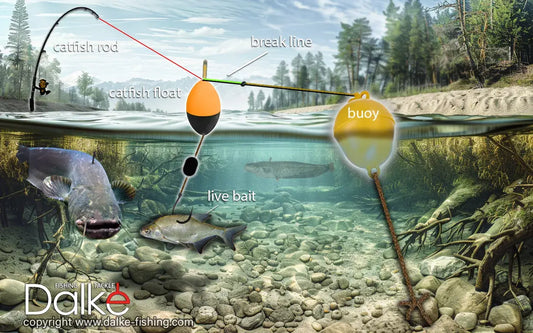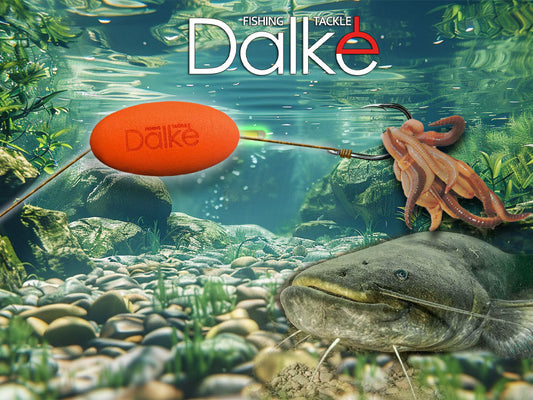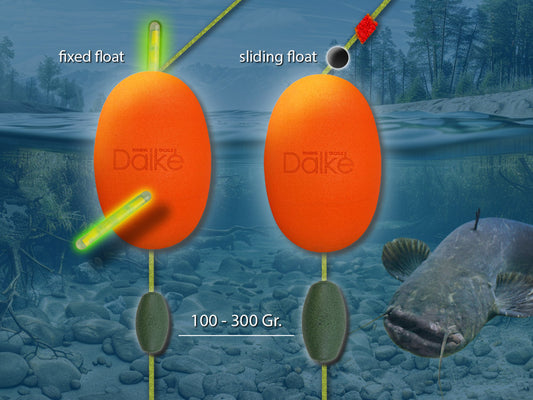
Where do the carcasses of large catfish disappear to?
Vitali DalkeShare
Where do the giants disappear to? Why do we almost never find carcasses of large catfish?
Analysis by Vitali Dalke
The European catfish is a true river giant. It can grow up to 3 meters long, weigh over 200 kilograms, and live up to 90 years. This powerful predator is the dream of many anglers. But there's a mystery: Despite their enormous size and long lifespan, dead catfish are almost never found floating on the shore or the water's surface. Where do these giants disappear to? The answer lies in their lifestyle and natural processes.
1. Master of camouflage: Where and how the catfish lives
The catfish is a true stealth fish. It inhabits deep, hard-to-reach areas in rivers and lakes: in riverbeds, deep holes, near dams. It loves muddy bottoms, tree stumps, eroded banks—places where it can easily hide. This is its fortress.
Catfish are predominantly nocturnal and rest on the bottom during the day, where they adapt to their environment.
Senses instead of sight: In murky water and darkness, the catfish relies not on its eyes but on its highly sensitive barbels (which detect smells and tastes) and lateral line organs (which sense water movement). This makes it the perfect hunter in conditions where other fish are helpless.
Conclusion: If a living catfish, hidden and nocturnal, is difficult to spot, then its dead body, left in the same deep depression or under tree stumps, remains even more hidden from human view. Even if it does surface, it may do so far from shore or in hidden areas.
2. Why catfish die and where this happens
Catfish die for various reasons, often in their hidden refuges:
Lack of oxygen (fish deaths): Large fish need a lot of oxygen. Oxygen can become scarce in the winter under ice or in the summer during heat waves and algal blooms. Weakened and old catfish die, and their carcasses remain on the bottom – invisible under the ice or until spring.
Diseases: Catfish are becoming ill. There are viruses that are particularly dangerous for young fish, but can also affect adult fish, especially in warm water or in poor environmental conditions.
Pollution: As predators, catfish accumulate pollutants (e.g., industrial waste, plastic) from water and prey. This can slowly kill large, old animals. Water pollution (chemicals, heavy metals) can accelerate decomposition, making remains invisible.
Important: In heavily polluted waters (industrial areas), catfish die more often, but their bodies decompose faster.
Old age: Old catfish (30+ years old) often retreat to the deepest and quietest areas before death. They move less, become weaker, and die unnoticed. Unlike juveniles, their bodies do not surface, as their fat layer and muscle mass keep them on the bottom.
Important: Many of these causes of death (oxygen deficiency, poisoning, old age) result in the catfish dying in its familiar, deep hiding place. Its body sinks immediately to the bottom—especially if it is large and heavy. Often, not enough gases are produced to cause the body to float.
3. What happens to the body after death: Nature cleans up
Even when a catfish dies, its body rarely remains visible for long. Nature quickly "disposes" of it:
Large catfish have a thick layer of fat and dense muscle mass that attract scavengers (crabs, mussels, and small fish). Within a few days, only the skeleton may remain of the carcass, which is either covered by sediment or destroyed by the current.
Decomposition in water: First, the body sinks. Then bacteria produce gases inside, allowing the body to float upside down. But not for long. The gases escape, and the body sinks again, continuing to decompose at the bottom.
Fact: Studies show that in warm water (+20°C and above) a fish body disappears completely within 1-2 weeks.
The speed of this process depends on:
Temperature: In warm water the body decomposes faster.
Oxygen: In low-oxygen water (where catfish often die), decomposition slows down, delaying the formation of buoyant gases. Thus, the carcass often remains on the bottom.
Flow: Strong currents can carry the body far away or tear it into pieces.
Depth: In the depths it is colder and darker – decomposition is slower and the body of a dead catfish remains hidden.
The main cleaners – scavengers: This is the key to "disappearance"! Many species live in waters that feed on carrion:
The catfish itself: Yes, catfish occasionally behave as scavengers!
Other residents: Gobies, eels, crabs, various aquatic insects and their larvae eat the soft tissue of dead fish at an enormous speed.
Birds and mammals: Herons, cormorants, otters, minks – they don’t miss a meal if it’s on the surface or on the shore.
The efficiency of these scavengers is astonishing. They can even "dismember" a large catfish within a few days. The body may surface and sink again, but the scavengers complete their work before a human notices it.
4. Conclusion: Why a dead catfish is a rarity
The rare finds of dead catfish can be explained by the interaction of several factors:
-
Hidden Life: Catfish die where they live – in deep, dark, inaccessible places.
-
Circumstances of death: The causes of death (oxygen deficiency, disease, old age) often result in the body remaining at the bottom and not surfacing.
-
Rapid decomposition: Water and microorganisms quickly destroy organic material.
-
Highly efficient scavengers: An army of crabs, insects, other fish, birds and mammals removes even large remains in record time.
-
Flow and chance: If a body does surface, the current can carry it far away or tear it apart, and people are simply not in the right place at the right time.
Data from ichthyologists: In rivers in Germany and the Netherlands, where catfish populations are monitored, large dead specimens are found 5–10 times less frequently than small ones.
Diploma: The absence of dead catfish on the surface is no mystery, but rather a testament to the astonishing efficiency of natural mechanisms. The hidden lifestyle of these giants in death, rapid decomposition processes, and, above all, the work of countless "water police" species ensure the almost immediate removal of their remains. Nature leaves no trace, and the catfish disappears without a trace – like a true river ghost.
Vitali Dalke

